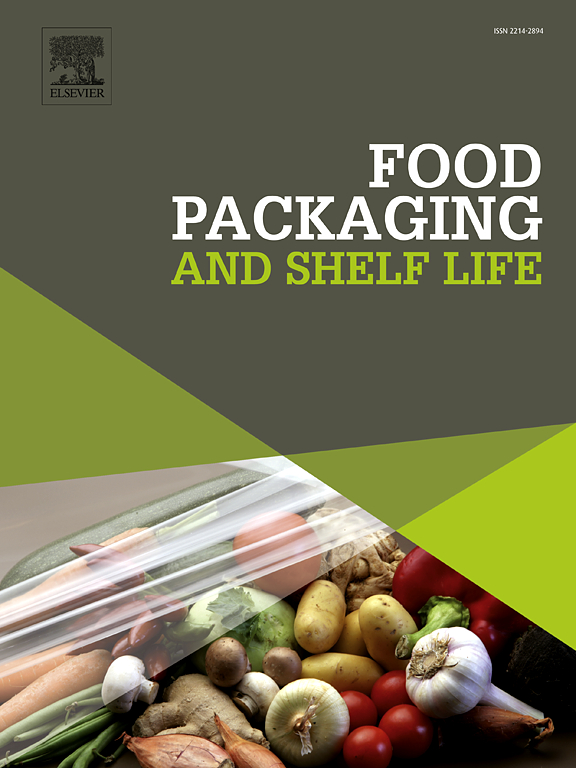Evaluation of different transport and distribution conditions on antimony migration from PET bottles to mineral water
IF 8.5
1区 农林科学
Q1 FOOD SCIENCE & TECHNOLOGY
引用次数: 0
Abstract
This work investigated the effects of temperature, storage time and vibration related to mineral water transport, on the migration of antimony (Sb) present in polyethylene terephthalate (PET) bottles. Sb was quantified by inductively coupled plasma optical emission spectrometry (ICP-OES). Different conditions were used, such as, storage time: 3, 7, 10, 14 and 21 days, temperature: 40, 50 and 60 °C and vibration: sinusoidal, random and no vibration. The concentrations of Sb in mineral water after 21 days of storage were lower than the limit of quantification (LOQ = 1.0 μg ℓ−1) of the method at 40 °C for the three types of vibration. At 50 °C, Sb concentrations were between 1.72 μg ℓ−1 and 1.96 μg ℓ−1. Sb migration was greater after 21 days of contact at 60 °C, with values greater than 4.00 μg ℓ−1. The main factors that affected the increase in Sb migration were temperature and storage time. The effects of sinusoidal and random vibration during the transport simulation did not affect the increase in Sb migration.
不同运输配送条件对PET瓶锑向矿泉水迁移的影响
本文研究了温度、储存时间和与矿泉水运输有关的振动对聚对苯二甲酸乙二醇酯(PET)瓶中锑(Sb)迁移的影响。用电感耦合等离子体发射光谱法(ICP-OES)定量测定Sb。储存时间:3、7、10、14和21天,温度:40、50和60 °C,振动:正弦、随机和无振动。在40 °C条件下,3种振动条件下,21 d后矿泉水中Sb的浓度均低于该方法的定量限(LOQ = 1.0 μ l−1)。在50 °C时,Sb浓度在1.72 ~ 1.96 μ r−1之间。在60 °C条件下,接触21天后Sb的迁移量更大,其值大于4.00 μ l−1。影响Sb迁移量增加的主要因素是温度和贮藏时间。在输运模拟过程中,正弦振动和随机振动对Sb迁移量的增加没有影响。
本文章由计算机程序翻译,如有差异,请以英文原文为准。
求助全文
约1分钟内获得全文
求助全文
来源期刊

Food Packaging and Shelf Life
Agricultural and Biological Sciences-Food Science
CiteScore
14.00
自引率
8.80%
发文量
214
审稿时长
70 days
期刊介绍:
Food packaging is crucial for preserving food integrity throughout the distribution chain. It safeguards against contamination by physical, chemical, and biological agents, ensuring the safety and quality of processed foods. The evolution of novel food packaging, including modified atmosphere and active packaging, has extended shelf life, enhancing convenience for consumers. Shelf life, the duration a perishable item remains suitable for sale, use, or consumption, is intricately linked with food packaging, emphasizing its role in maintaining product quality and safety.
 求助内容:
求助内容: 应助结果提醒方式:
应助结果提醒方式:


